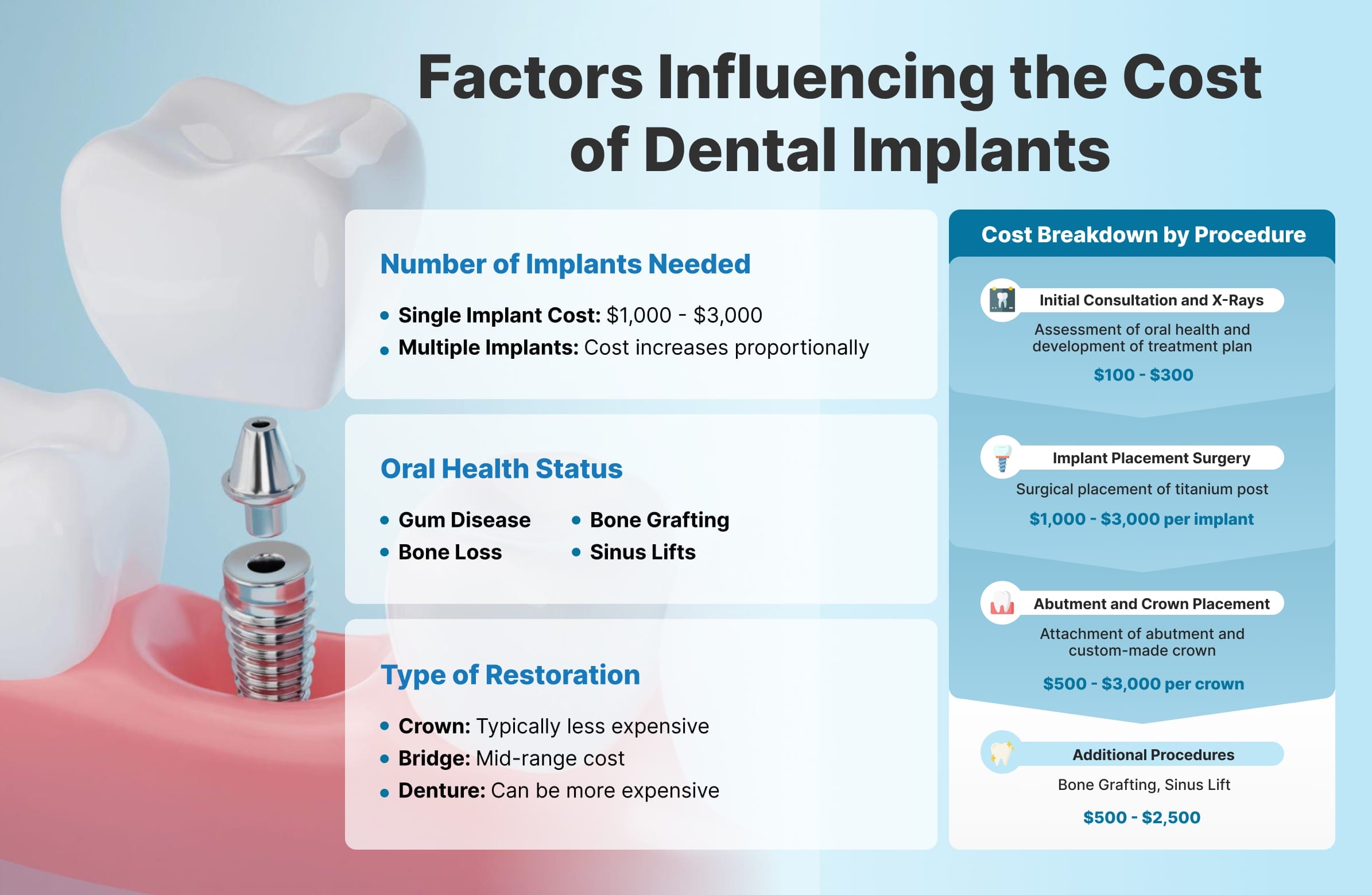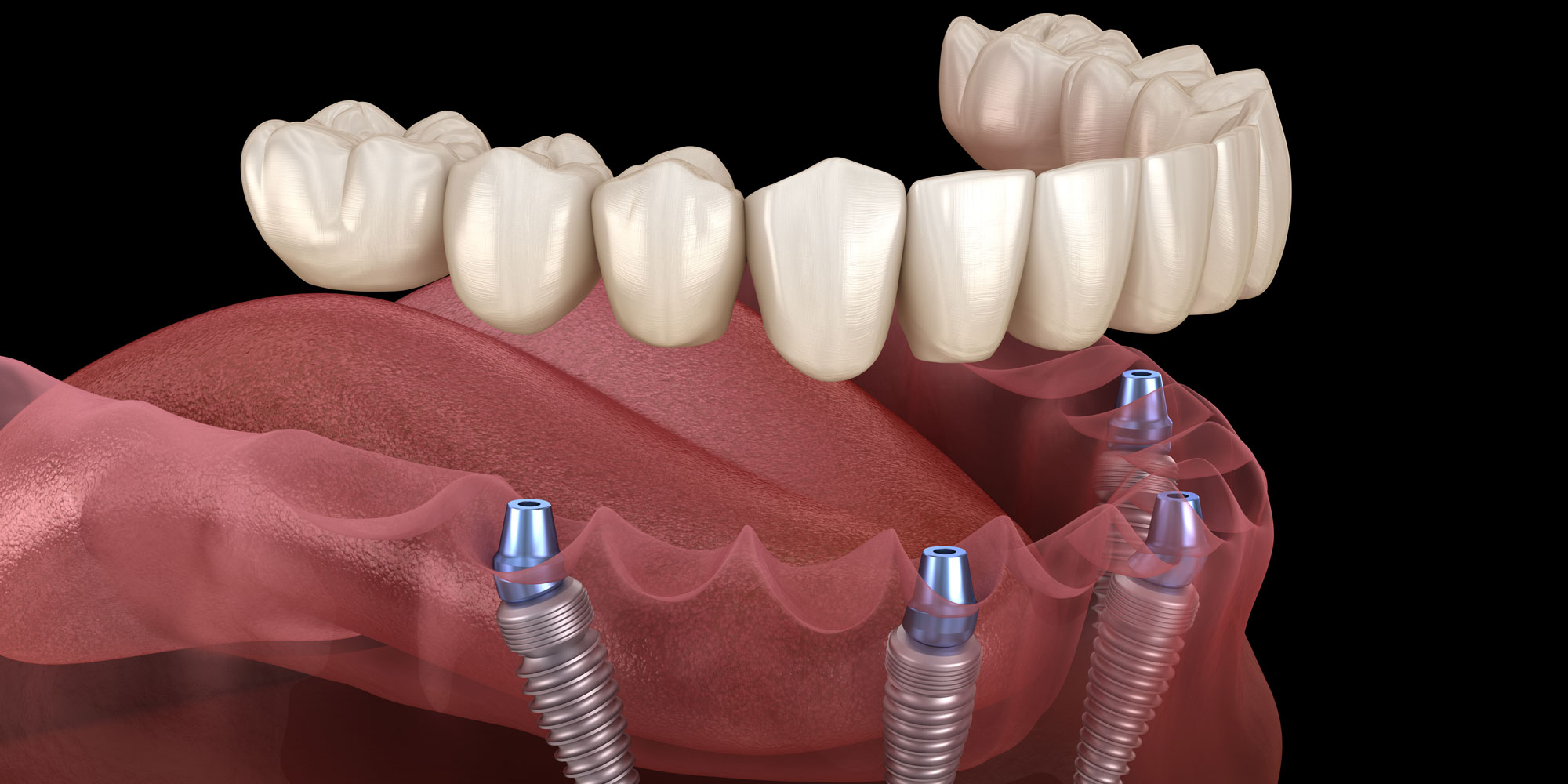An Unbiased View of Dental Sense
Table of ContentsDental Sense Fundamentals ExplainedDental Sense - QuestionsA Biased View of Dental SenseHow Dental Sense can Save You Time, Stress, and Money.
are clinical tools operatively implanted into the jaw to bring back an individual's ability to chew or their appearance. They provide support for synthetic (fake) teeth, such as crowns, bridges, or dentures. When a tooth is shed as a result of injury or condition, an individual can experience complications such as quick bone loss, faulty speech, or adjustments to eating patterns that result in discomfort.Dental dental implant systems are composed of a dental implant body and dental implant abutment and may additionally include an abutment addiction screw. Same day dental implants. The oral implant body is surgically put in the jawbone in place of the tooth's origin. The oral implant abutment is normally affixed to the dental implant body by the abutment fixation screw and expands with gums right into the mouth to support the attached fabricated teeth
(https://salty-hope-7c7.notion.site/Transform-Your-Smile-with-Expert-Dental-Services-178171a6c2a68016ac50cca51ef9527c?pvs=4)Framework of The Dental Implant System picking dental implants, speak to your oral copyright about the potential benefits and threats, and whether you are a prospect for the procedure. Things to consider: Your total wellness is a vital consider establishing whether you are an excellent prospect for dental implants, exactly how long it will take to heal, and the length of time the dental implant may stay in place.
Smoking may influence the healing process and decrease the lasting success of the dental implant. The healing process for the implant body might take a number of months or longer, throughout which time you normally have a momentary joint instead of the tooth. the dental implant procedure: Very carefully follow the oral health directions offered to you by your oral copyright.
The Ultimate Guide To Dental Sense
Implant failing can result in the requirement for one more medical procedure to deal with or replace the dental implant system. Restores the capability to chew Restores aesthetic look Helps keep the jawbone from reducing due to bone loss Maintains the health of the bordering bone and gum tissues Assists maintain adjacent (neighboring) teeth stable Enhances quality of life Damages to bordering natural teeth during dental implant placement Injury to the surrounding cells during surgical procedure, such as sinus opening Injury throughout surgery (as an example, crack of bordering jawbone) Inadequate function, such as really feeling like the teeth do not attack with each other typically A feeling that the tooth is loosened or turning in place resulting from an abutment screw loosening up Implant body failing (looseness of the dental implant body) as a result of systemic infection, which might be more probable in individuals with unchecked diabetes due to regional infection in bone and periodontals sustaining the dental implant body because of postponed recovery, which may be extra most likely in people that smoke Difficulty cleaning the periodontals around the dental implant, causing inadequate dental health Untreated periodontal disease Post-surgical pins and needles due to nerve impingement or damage Always notify health care suppliers and imaging professionals that you have oral implants prior to any type of magnetic resonance imaging (MRI) or x-ray procedures.
FDA is not familiar with any unfavorable events reported for MRI or x-ray treatments with oral implants. Dental implants systems are usually made from materials that adhere to global consensus standards of the International Organization for Standardization (ISO) or ASTM International. These criteria have information of what makes a risk-free material.

An oral implant is a structure that changes a missing tooth. With screw-like gadgets, the cosmetic surgeon inserts an implant into the jawbone, and it acts as a support for a fabricated tooth, called a crown.
Things about Dental Sense
Some people are not eligible for dental implant surgical procedure. It is for oral cosmetic surgeons to operate on people with: acute illnessuncontrollable metabolic diseasebone or soft tissue condition or infectionIf these issues are settled, a person can have the surgical treatment. In, dental doctors avoid running on individuals with: If people with any of the above undergo oral implant surgical treatment, there is a higher risk of the implant stopping working.

Dental dental implant surgery is a customized procedure. It's not the very same for everyone. However the following gives a basic summary of what you can expect your dental expert, oral specialist, periodontist or prosthodontist to do: Position the implant operatively. Provide you read here time to recover. Connect the article and last crown, bridge or denture.
Next, your doctor will carefully place the dental implant into your jaw. Lastly, your surgeon will reposition your gum tissues and close the cut with stitches. If your implant is near the front of your mouth, your dental professional will certainly make a temporary tooth for you to put on up until you recover. In this way, you won't have a space in your smile while you recover.
Unknown Facts About Dental Sense
Throughout the healing stage, your jawbone must fuse to the dental implant. This procedure can take anywhere from three to 9 months.
As soon as your implant heals, your dentist can affix the abutment (little adapter message) and your last restoration (crown, bridge or denture). This normally takes about one hour to complete and might require a second minor surgery. You shouldn't feel any kind of pain throughout your oral implant procedure due to the fact that your provider will use medicine to numb your gum tissues.